Introduction
In the realm of cloud computing, cost management has emerged as a critical priority for organizations leveraging Amazon Web Services (AWS). As businesses increasingly adopt AWS for their infrastructure needs, understanding the intricacies of cost-saving mechanisms becomes essential.
AWS Savings Plans, with their flexible pricing models, present a unique opportunity for organizations to optimize their cloud expenditures significantly. This article delves into the various strategies for conducting a thorough cost savings analysis, examining the tools available for effective management, and exploring advanced techniques that can lead to substantial financial benefits.
By harnessing these insights, organizations can not only enhance their operational efficiency but also ensure sustainable growth in an ever-evolving digital landscape.
Understanding AWS Savings Plans: A Foundation for Cost Savings Analysis
AWS Savings Plans are designed to provide flexible pricing models that result in significant reductions on AWS usage when compared to on-demand pricing. The two main categories of financial plans include:
- Compute Savings Plans: which allow usage across any EC2 instance regardless of the region, instance family, or operating system.
- EC2 Instance Savings Plans: which are customized for a specific instance family within a designated region.
Significantly, EC2 Instance Savings Plans can provide reductions of up to 72%, making them an attractive choice for organizations aiming to optimize expenses.
Understanding the subtleties of these strategies is essential for organizations looking to perform an AWS cost savings analysis to evaluate their existing cloud expenditures and identify possible cost reduction opportunities. A strategic evaluation of historical usage data is essential for performing an AWS cost savings analysis to determine which financial plan aligns optimally with your organization's operational requirements. As mentioned by ProsperOps,
"With ProsperOps, our platform utilizes AI and automation to assess real-time data points — against a backdrop of 134 million instances under management — to double effective cost reduction rates (up to 50%) without needing engineering support or technical trade-offs."
This AWS cost savings analysis not only facilitates maximum savings but also ensures the continued efficiency of cloud operations, making it a vital step in effective cloud management.
Additionally, engineering decisions regarding instance types, operating systems, and regions can significantly influence the Effective Savings Rate for cloud services. For example, utilizing a Linux operating system typically leads to reduced expenses compared to a Microsoft operating system, illustrating how strategic decisions can influence cloud expenditures.
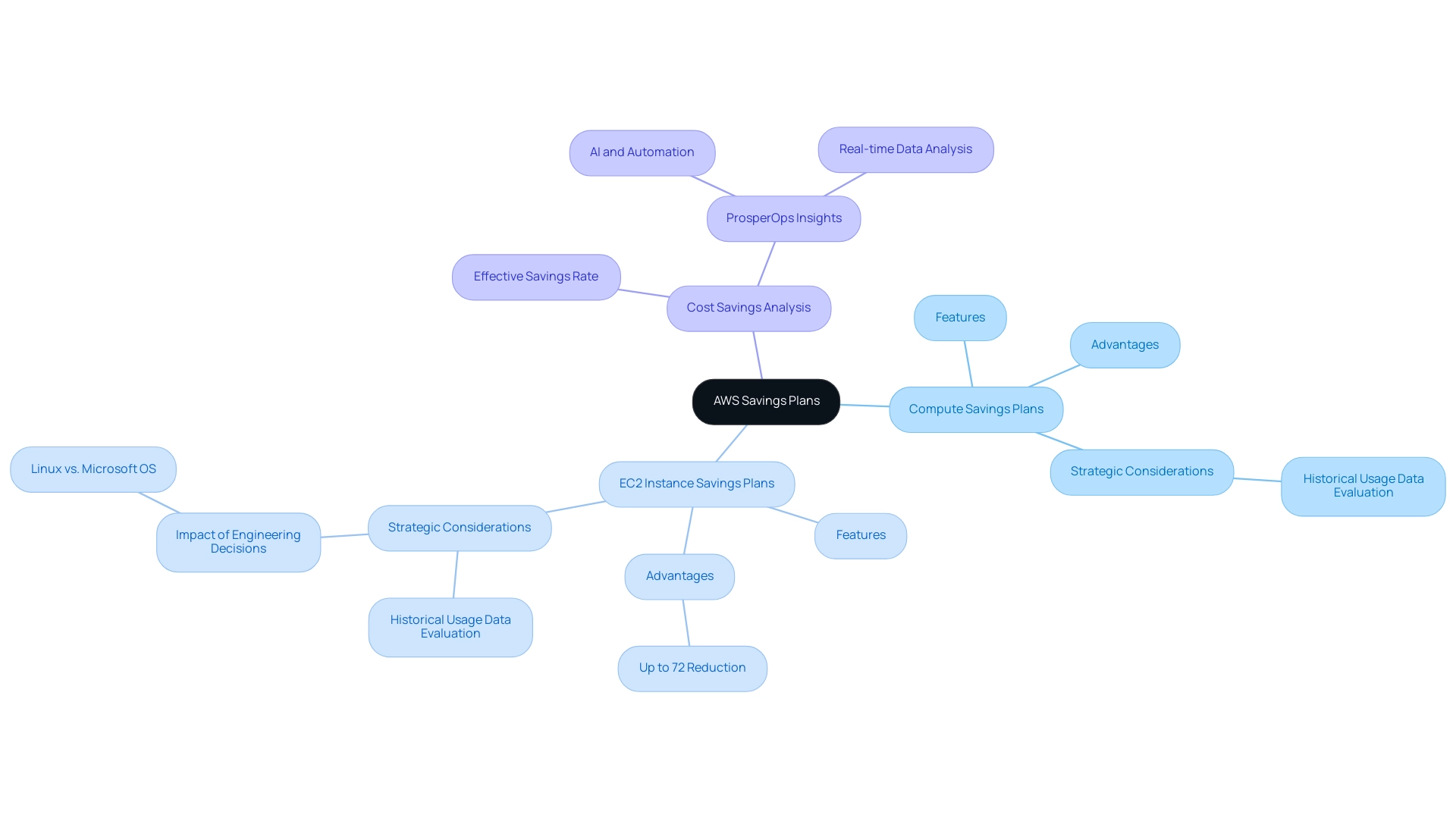
Step-by-Step Guide to Conducting an AWS Cost Savings Analysis
-
Gather Utilization Data: Initiate the analysis by extracting utilization data from the AWS Billing and Cost Management dashboard. This data is crucial for conducting an aws cost savings analysis to understand resource utilization patterns across your cloud environment. As Cody Slingerland, a FinOps certified practitioner, states, 'Comprehending your consumption data is the first step in efficient expense management.'
-
Analyze Historical Spending: Conduct a thorough review of historical spending trends spanning the last 6 to 12 months. This step is crucial for the aws cost savings analysis, as it helps recognize demand spikes and set baseline expenses, which will guide future savings strategies. For example, if your t3a. Micro EC2 instance has shown consistent underutilization, it may be time to reassess its necessity.
-
Identify Underutilized Resources: Scrutinize your resource allocations to pinpoint instances or services that are consistently underutilized. These resources often present opportunities for downsizing or termination, which can be important for an aws cost savings analysis.
-
Evaluate Savings Plans: With insights gained from your consumption data, assess the potential benefits of various AWS Savings Plans. It is important to perform an aws cost savings analysis to weigh the commitment levels against anticipated utilization in order to identify the most suitable option for your organization.
-
Calculate Projected Benefits: Utilize the AWS Pricing Calculator to estimate potential advantages associated with your chosen Savings Plans and usage patterns. This tool aids in forecasting the financial impact of your decisions by utilizing an aws cost savings analysis.
-
Document Findings: Compile your analysis into a comprehensive report that details current spending, outlines potential savings, and provides actionable recommendations for implementation. This documentation is vital for securing stakeholder buy-in and guiding future budgeting decisions through aws cost savings analysis. Furthermore, examine the case study titled 'Combining AWS Native Tools with Third-Party Solutions,' which demonstrates how utilizing a hybrid approach can offer extensive insights into financial management, enhancing analysis and forecasting capabilities.
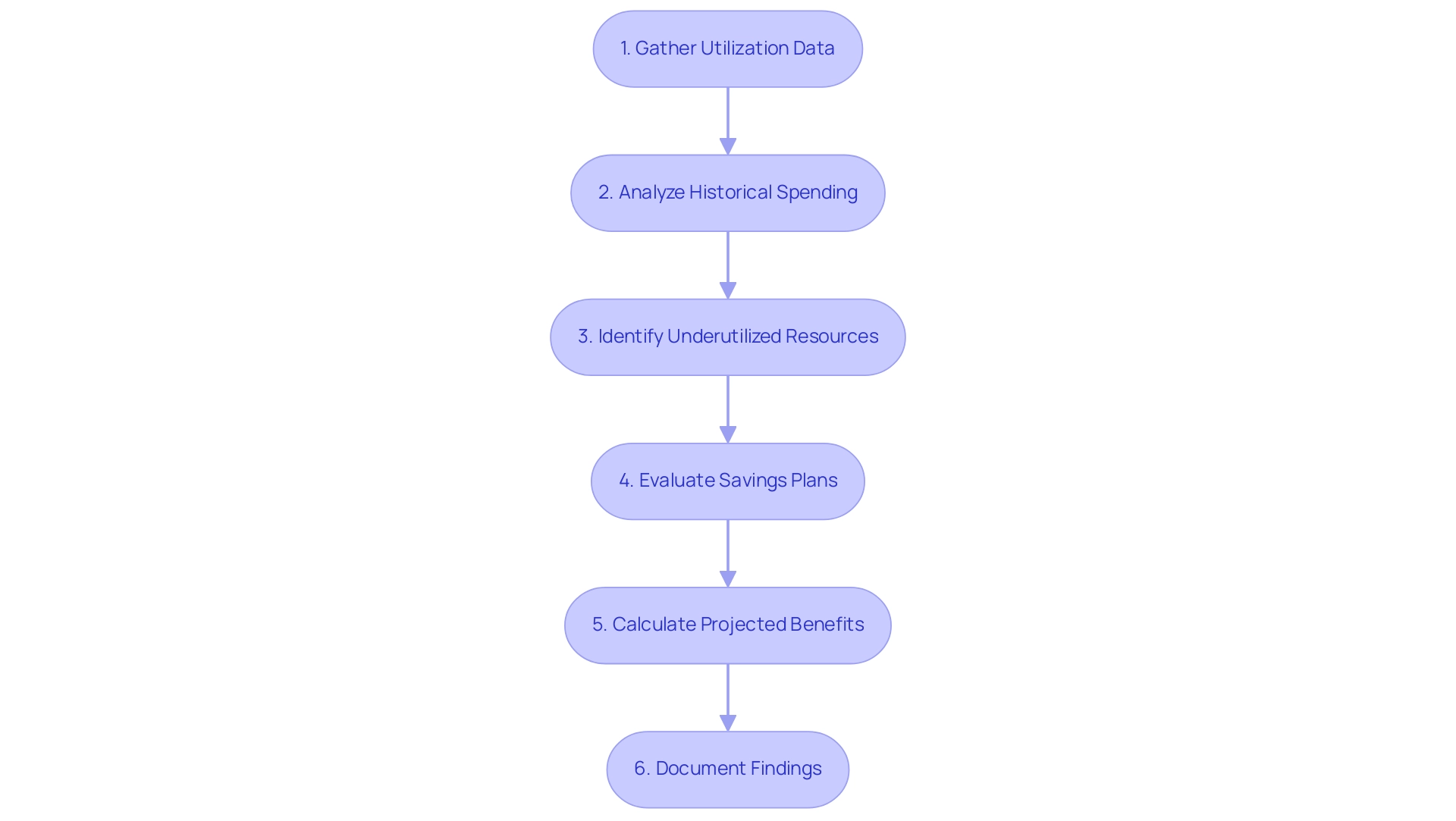
Leveraging AWS Tools for Effective Cost Management
AWS provides a comprehensive set of tools aimed at improving financial management and facilitating an AWS cost savings analysis to optimize cloud expenditure. Among these, AWS Cost Explorer stands out as an essential resource for visualizing and analyzing AWS expenditures over time. With the ability to support up to 500 million activity records, users can filter and group data efficiently to identify trends and recognize key expense drivers.
This granular level of detail enables organizations to perform an AWS cost savings analysis, leading to substantial reductions.
The Savings Plans Purchase Analyzer further enhances management by enabling users to conduct an AWS cost savings analysis of their usage against various savings plans. This tool provides insights that enable businesses to select the most advantageous plan, ensuring maximum financial efficiency.
AWS Budgets is another essential tool that allows organizations to establish specific budgets for their AWS expenses, complete with alerts that activate when spending approaches or surpasses predefined limits. This proactive strategy to financial management includes an AWS cost savings analysis that not only assists in maintaining fiscal discipline but also encourages a culture of accountability within teams. The effectiveness of AWS Budgets in monitoring and controlling expenses is vital for organizations aiming to perform an AWS cost savings analysis to maximize their cloud investments.
Additionally, AWS Trusted Advisor delivers real-time guidance, assisting users in provisioning resources according to AWS best practices. This includes suggestions specifically aimed at expense optimization, reinforcing the importance of conducting an AWS cost savings analysis for effective management of cloud expenditures.
As noted by Cody Slingerland, a FinOps certified practitioner, collaboration with internal team members and subject matter experts is crucial in leveraging these tools effectively. His insights, shared through expert-written content on the CloudZero blog, emphasize the value of conducting an AWS cost savings analysis to leverage AWS’s comprehensive financial management features for driving savings and efficiency within organizations.
To demonstrate the significance of proactive expense management, a recent case study titled "Public IPv4 Addresses Expense Projection" emphasizes the potential future expenditures related to public IPv4 utilization, educating users about the financial consequences of their cloud resource choices. Furthermore, users can download a comprehensive review of their data in a CSV file, enhancing the practicality of these tools and enabling deeper analysis of their spending patterns.
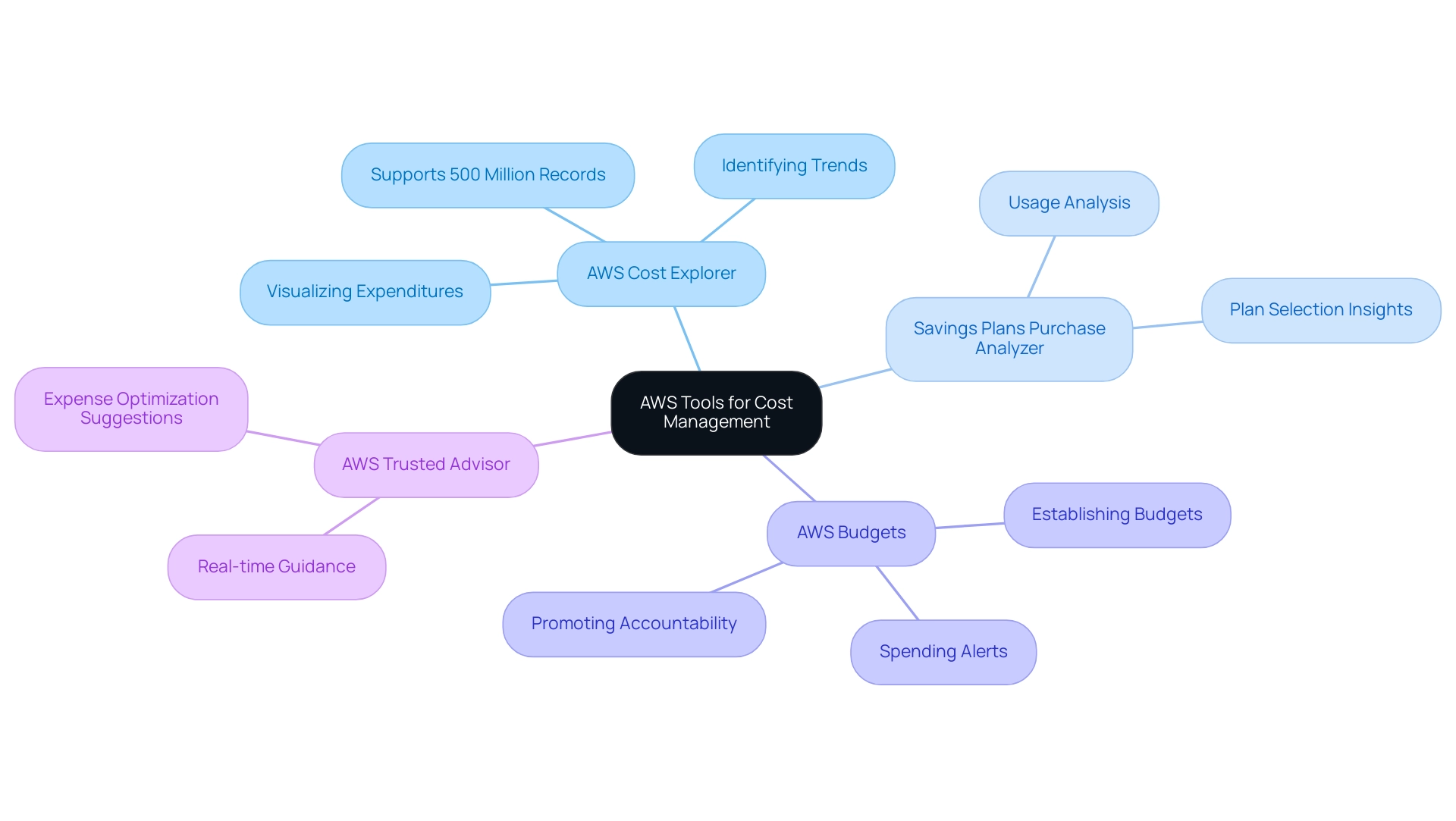
Monitoring Usage Patterns for Identifying Cost Savings
Regular observation of AWS activity trends is essential for efficient financial management and performing an AWS cost savings analysis. To achieve this, implement the following best practices:
- Set Up CloudWatch Alarms: Leverage Amazon CloudWatch to configure alarms that trigger notifications upon reaching specified thresholds for resource usage. This proactive strategy facilitates prompt measures to tackle unusual spikes in consumption, thereby preventing unforeseen financial overruns.
- Conduct Monthly Reviews: Establish a routine of performing monthly evaluations of your AWS consumption and expenditures. This practice enables you to recognize emerging patterns and make necessary adjustments to your expense management strategies during the AWS cost savings analysis, ensuring they remain effective in the face of changing usage dynamics.
- Utilize Tagging: Apply resource tagging to systematically categorize and monitor spending by project, department, or environment. This level of granularity not only offers insight into where expenses are being generated but also facilitates targeted initiatives as part of an AWS cost savings analysis.
Implementing these strategies is underscored by the case study on AWS Monitoring Best Practices, which reveals that organizations adopting systematic monitoring techniques significantly enhance their operational efficiency. For example, companies that adopted these practices reported a 20% decrease in unnecessary expenses. Cody Slingerland, a FinOps certified practitioner, highlights the significance of teamwork in establishing effective monitoring strategies: "Collaboration with internal team members and subject matter experts is essential to developing robust content on AWS expense management."
Furthermore, staying informed about current trends in AWS expenditure optimization techniques is essential for performing an AWS cost savings analysis, as it provides a competitive edge in managing cloud expenses effectively.
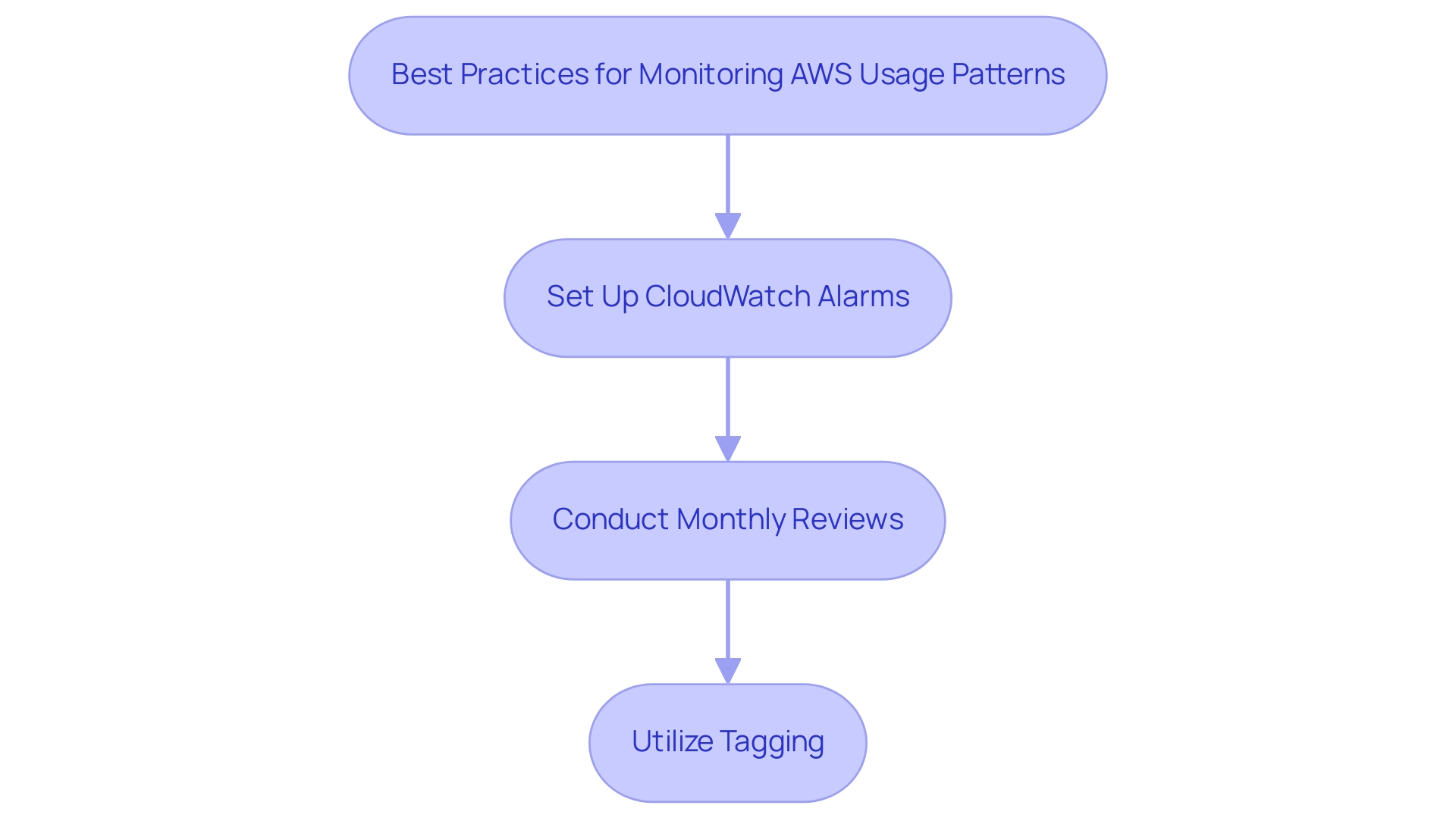
Advanced Strategies for AWS Cost Optimization
-
Rightsizing Instances: Analyzing and adjusting the sizes of your EC2 instances based on actual usage is a crucial step in optimizing expenses. This practice minimizes the risk of over-provisioning and can result in substantial savings. In fact, companies that implement effective rightsizing strategies often see immediate financial advantages, as demonstrated by the recent integration of CloudWatch, which has provided instant reductions through precise rightsizing of EC2 instances. An e-commerce business, for example, realizes financial efficiencies by reducing operations during off-peak times, highlighting the practical advantages of rightsizing.
-
Employ Spot Instances: Spot instances offer an attractive chance for financial reduction, especially for non-essential workloads. Offering prices significantly lower than on-demand instances, they provide a cost-effective solution for flexible workloads. As the AWS Spot Instances market evolves in 2024, organizations can leverage these offerings to improve their financial management strategies, tapping into the significant savings potential that these instances provide.
-
Implement Auto Scaling: AWS Auto Scaling is a vital tool that enables automatic adjustment of instance quantities based on real-time demand. This capability ensures that organizations only pay for the resources they actively need, thereby optimizing costs effectively. By aligning your infrastructure with real consumption patterns, you can maintain operational efficiency while minimizing unnecessary expenditures.
-
Utilize Reserved Instances: For predictable workloads, investing in reserved instances can result in significant reductions compared to traditional on-demand pricing. Conducting an AWS cost savings analysis of your usage patterns is essential to determine the optimal commitment level, allowing you to maximize your financial benefits over time. Furthermore, utilizing tools like CloudKeeper Auto can assist in achieving optimal AWS Reserved Instances coverage, ensuring that you are making the most of your investment. As noted by nOps,
nOps make it completely pain-free, safe and effortless for engineers to actually act on recommendations and start saving,
highlighting the ease of integrating these strategies into your operational framework.
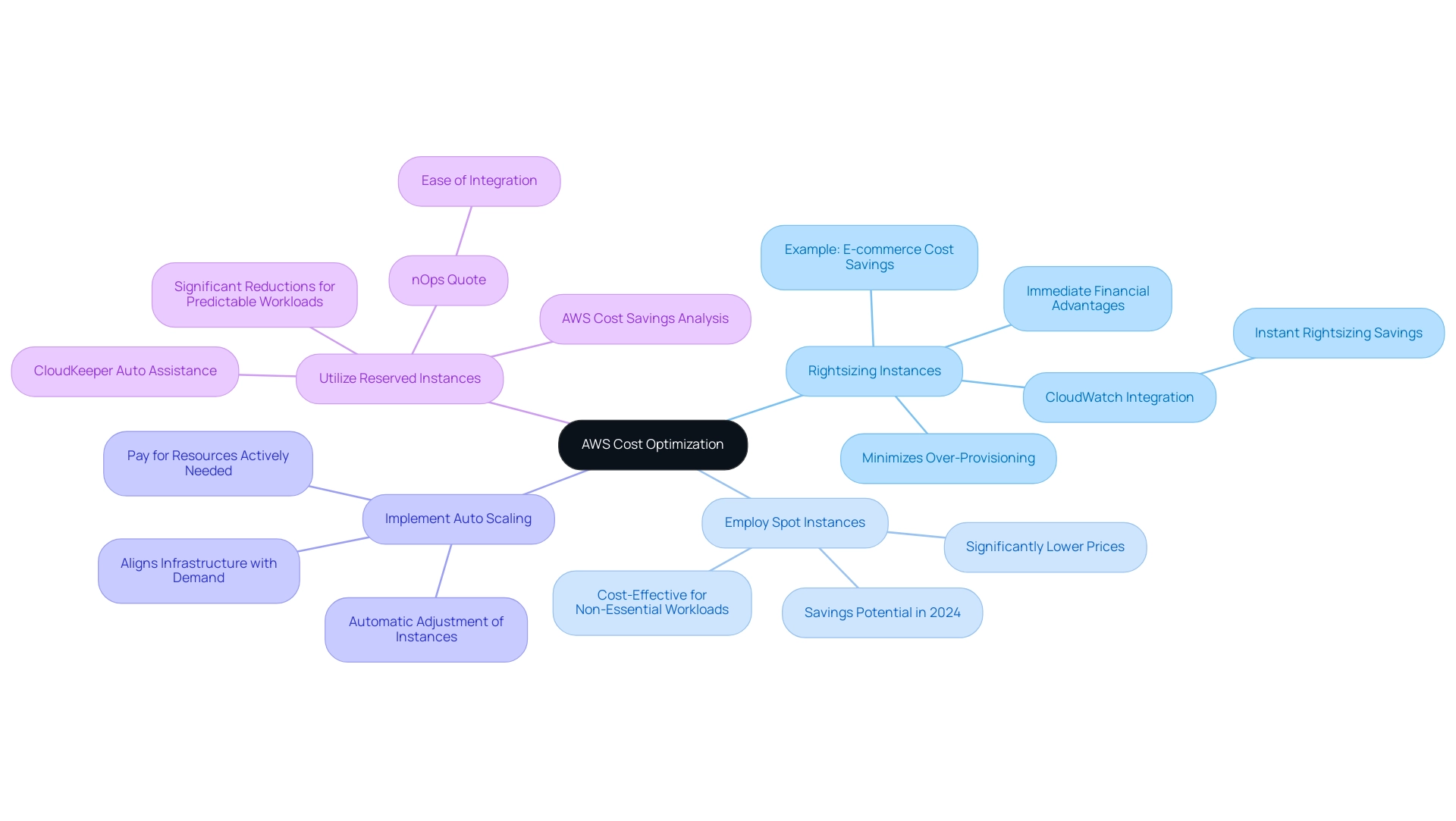
Conclusion
Organizations seeking to optimize their cloud expenditures on AWS must prioritize effective cost management strategies. By leveraging AWS Savings Plans, businesses can achieve substantial savings by selecting the most suitable plan based on their usage patterns. Understanding the differences between Compute and EC2 Instance Savings Plans is essential, as these options can lead to savings of up to 72% when chosen strategically.
Conducting a thorough cost savings analysis is a multi-step process that requires careful examination of usage data, historical spending, and underutilized resources. By utilizing AWS tools such as:
- Cost Explorer
- Savings Plans Purchase Analyzer
- AWS Budgets
organizations can gain valuable insights into their spending habits and make informed decisions that align with their financial goals. Regular monitoring of usage patterns, combined with best practices like setting up CloudWatch alarms and systematic tagging, further enhances the ability to identify and act on cost-saving opportunities.
Advanced strategies such as:
- rightsizing instances
- utilizing spot instances
- implementing auto scaling
- investing in reserved instances
provide additional avenues for significant cost reductions. These techniques not only optimize resource allocation but also ensure that organizations remain agile in an ever-evolving cloud landscape.
In conclusion, effective cost management in AWS is not merely an operational necessity; it is a strategic imperative for sustainable growth. By embracing these cost-saving strategies and tools, organizations can enhance their operational efficiency, drive substantial financial benefits, and maintain a competitive edge in the digital marketplace. Now is the time to take proactive steps toward optimizing cloud expenditures to secure long-term success.




